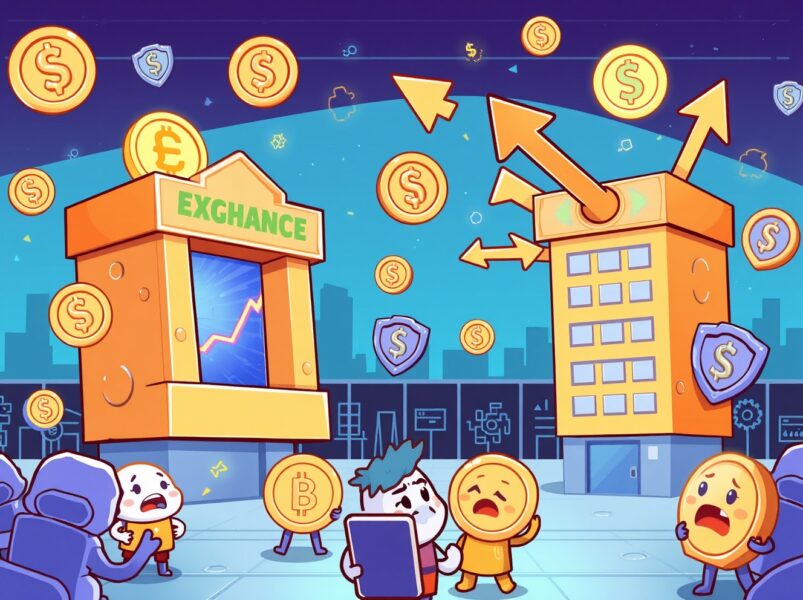Shocking 50% Kimchi Premium Explosion: ORCA Token Surges Amid Upbit Crisis

BitcoinWorld
Shocking 50% Kimchi Premium Explosion: ORCA Token Surges Amid Upbit Crisis
Imagine watching cryptocurrency prices diverge by over 50% between exchanges – that’s exactly what’s happening right now with the kimchi premium for ORCA and other Solana tokens. This dramatic price gap has traders and investors scrambling as South Korea’s Upbit exchange faces a major security crisis.
What Exactly Is the Kimchi Premium Phenomenon?
The kimchi premium refers to the price difference between cryptocurrencies traded on South Korean exchanges versus international platforms. This unique market situation occurs due to several factors:
- Limited arbitrage opportunities between markets
- Strong domestic demand in South Korea
- Capital flow restrictions and regulatory differences
- Exchange-specific liquidity conditions
Currently, we’re witnessing one of the most extreme kimchi premium events in recent memory, with ORCA showing a staggering 50.72% price difference between Upbit and Binance.
Why Did the Kimchi Premium Suddenly Explode?
The trigger for this massive kimchi premium surge came from Upbit’s emergency announcement. The exchange suspended all digital asset deposits and withdrawals following a security breach involving approximately 54 billion won ($39.13 million) in Solana-based assets. This created immediate market imbalances:
- Traders cannot move assets between exchanges
- Arbitrage opportunities become impossible to execute
- Local demand remains strong while supply is frozen
- Panic buying drives prices higher on the isolated exchange
Therefore, the kimchi premium for ORCA, RAY, and other Solana tokens skyrocketed as the market reacted to these extraordinary circumstances.
Which Tokens Are Most Affected by This Kimchi Premium Spike?
The kimchi premium isn’t affecting all tokens equally. Solana-based assets are experiencing the most dramatic price divergences. Here’s the breakdown of current premiums:
- ORCA: 50.72% premium on Upbit versus Binance
- RAY: 48.9% premium showing similar volatility
- HUMA and LAYER: Premiums in the 10% range
Moreover, this kimchi premium situation highlights how specific token ecosystems can become vulnerable during exchange-specific crises. The concentration of Solana assets in the Upbit hack has created targeted pressure on these particular cryptocurrencies.
What Does This Kimchi Premium Surge Mean for Traders?
This extreme kimchi premium presents both risks and opportunities for cryptocurrency traders. While the price differences appear tempting, several challenges exist:
- Withdrawal halts prevent actual arbitrage execution
- Prices could normalize rapidly when services resume
- Regulatory scrutiny might increase after such events
- Market confidence in affected exchanges could weaken
However, understanding kimchi premium dynamics can help traders anticipate market movements and identify potential entry or exit points once normal operations resume.
How Long Might This Kimchi Premium Situation Last?
Historical patterns suggest that extreme kimchi premium events tend to normalize once exchange operations stabilize. However, the duration depends on several factors:
- How quickly Upbit resolves security issues
- Regulatory response from South Korean authorities
- Market sentiment toward affected tokens
- Broader cryptocurrency market conditions
Typically, such kimchi premium spikes can last from several days to weeks, depending on the complexity of the underlying issues and the exchange’s recovery speed.
Conclusion: Navigating the Kimchi Premium Landscape
The current kimchi premium explosion serves as a powerful reminder of cryptocurrency market fragmentation and exchange-specific risks. While the 50%+ premiums for ORCA and other Solana tokens create apparent opportunities, they also highlight the importance of exchange security and market infrastructure. As the situation evolves, traders should monitor Upbit’s recovery progress and prepare for potential market normalization. Understanding kimchi premium dynamics remains crucial for anyone operating in global cryptocurrency markets.
Frequently Asked Questions
What causes the kimchi premium to occur?
The kimchi premium happens due to market fragmentation between South Korean and international exchanges, often driven by regulatory differences, capital controls, and varying supply-demand dynamics.
Can traders profit from the kimchi premium during withdrawal halts?
No, during withdrawal halts, traders cannot execute arbitrage between exchanges because they cannot move assets to capitalize on price differences.
How does the kimchi premium affect long-term investors?
Long-term investors should focus on fundamental value rather than temporary premium spikes, as these situations typically normalize over time.
Are kimchi premium events common in cryptocurrency markets?
While price differences always exist between exchanges, extreme kimchi premium events like the current 50%+ spike are relatively rare and usually tied to specific market disruptions.
What risks does the kimchi premium indicate?
Extreme kimchi premium levels often signal exchange-specific problems, regulatory issues, or market infrastructure failures that require careful monitoring.
How can I track kimchi premium changes?
Several cryptocurrency data platforms monitor price differences between major exchanges, providing real-time kimchi premium calculations for various tokens.
Found this analysis of the kimchi premium situation helpful? Share this article with fellow cryptocurrency enthusiasts on social media to help them understand these dramatic market movements and make informed trading decisions.
To learn more about the latest cryptocurrency market trends, explore our article on key developments shaping Solana ecosystem recovery and future price action.
This post Shocking 50% Kimchi Premium Explosion: ORCA Token Surges Amid Upbit Crisis first appeared on BitcoinWorld.
You May Also Like

USD/CHF rises on US dollar rebound, weak Swiss economic data

Turkmenistan Passes Law to Regulate Crypto Market: Report
